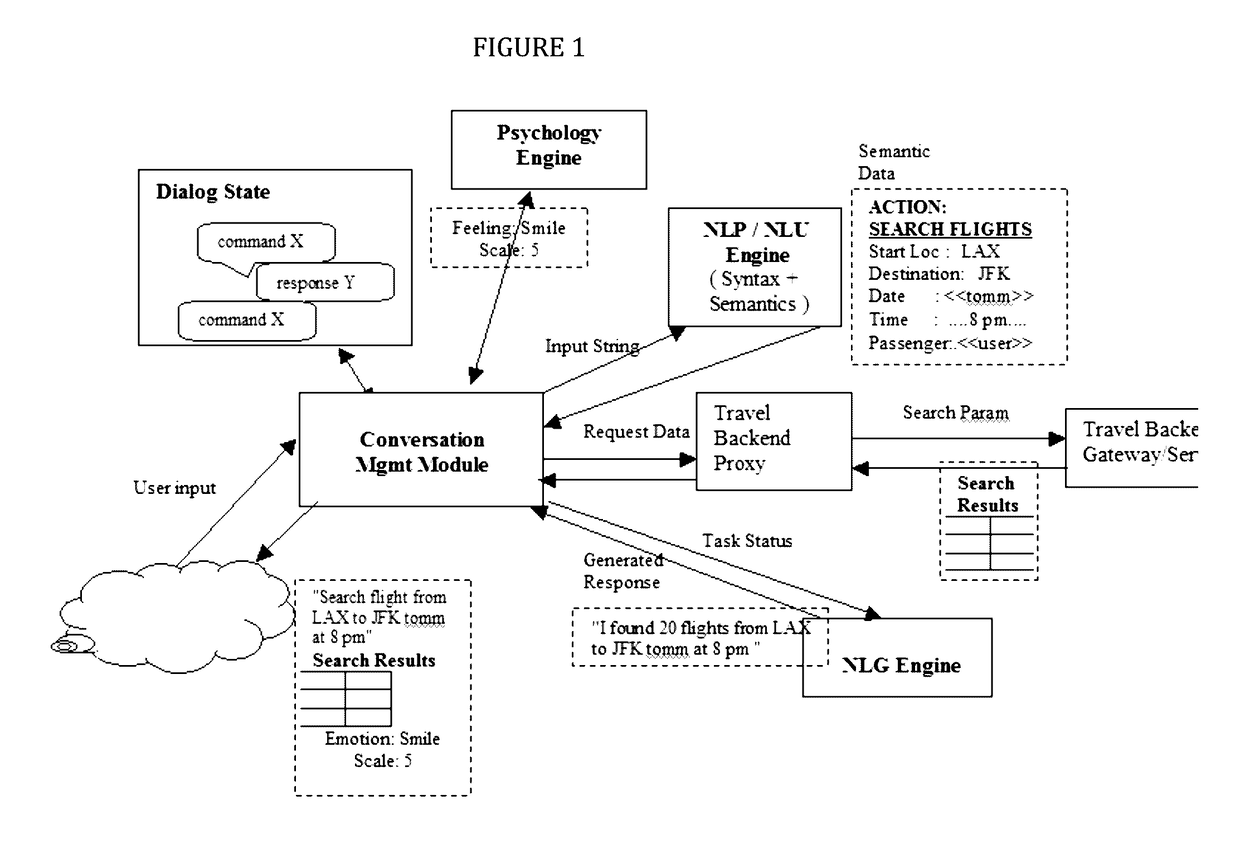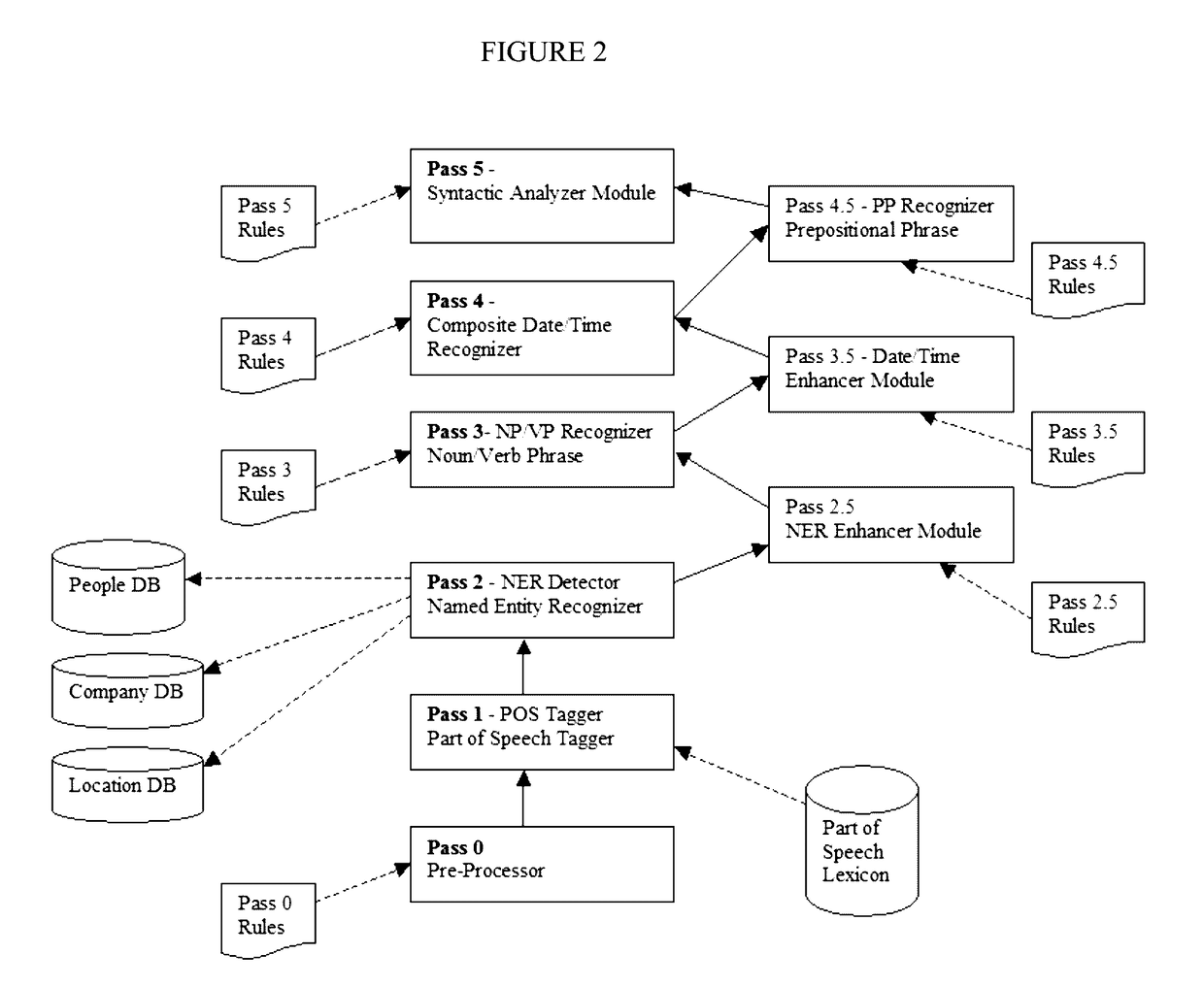Intelli-voyage travel
a technology of intelli and travel information, applied in the field of mobile device applications, can solve the problem that the messaging application does not provide an option for obtaining detailed travel related information in a interactive manner
- Summary
- Abstract
- Description
- Claims
- Application Information
AI Technical Summary
Benefits of technology
Problems solved by technology
Method used
Image
Examples
example 3
[0192]There are some named entities which cannot be resolved without having a mandatory common noun inside them. e.g. “US Airways” is a good example for a mandatory common noun indicator.
[0193]“US” by itself can be a country. A mandatory common noun indicator of “Airways” would ensure that if a user inputs only US.
[0194]Sentences like “I fly US Airways” would make sense as supposed to “I fly US” as the latter could also mean the user is traveling to USA.
[0195]All this is possible only through a Dispatcher and the UNKnown Token List Parser (which will be referred to as UNKTokenListParser). The dispatcher takes care of the set of UNKs to be passed to the UNKTokenListParser to find out the Named Entity (ies) in the Unknowns (UNKs) mentioned in the sentence.
[0196]Referring now to FIG. 6.
[0197]This algorithm is shown by a sequence diagram as follows
[0198]Sequence of Steps
[0199]The sequence of steps for this is as follows[0200]1. The dispatcher receives the part of speech sequence as well...
example 4
[0216]Consider the example “Ronald Reagan Washington” (national) (airport)
[0217]The user can directly specify only the name of the place and not necessarily indicate the type of the location. In this case, Ronald Regan Washington is the name of the airport. However, this looks like the name of a person.
[0218]The parameters in this case can be classified as follows
[0219]In this case, the consecutive occurrence of a first name, last name and a probable location can indicate an airport.
[0220]This is not just a location but has the highest possibility of being an airport as the full name of a person is mentioned followed by the location. Therefore, a rule in pass 2.5 is mentioned as follows[0221]NNP (FirstName) NNP (LastName) NNP (Location)→NNP (Airport)
[0222]This means if you find a proper noun (representing a first name) followed by a proper noun (representing a last name) followed by a proper noun (representing a location) then COMBINE them and consider the COMPOSITE ENTITY as a Nam...
example 5
[0227]
[0228]Another pertinent example can be identified for hotels “Hilton Manhattan”
[0229]The combination of a last name and area would usually end up being a hotel in a particular location. This would prompt the rule
[0230]Hilton by itself is the last name and could easily be a person. Had there been “Mr.” or “Ms.” Or some way of representing a person preceding the UNK values, then the identification would override the generic recognition which would result in the outcome based on the rule below[0231]NNP(LastName) NNP(Location)→ NNP (Hotel)
[0232]Furthermore, there are a number of Hilton hotels in USA. The place “Manhattan” gives a better indication of which Hilton hotel the user is talking about
PUM
 Login to View More
Login to View More Abstract
Description
Claims
Application Information
 Login to View More
Login to View More - R&D
- Intellectual Property
- Life Sciences
- Materials
- Tech Scout
- Unparalleled Data Quality
- Higher Quality Content
- 60% Fewer Hallucinations
Browse by: Latest US Patents, China's latest patents, Technical Efficacy Thesaurus, Application Domain, Technology Topic, Popular Technical Reports.
© 2025 PatSnap. All rights reserved.Legal|Privacy policy|Modern Slavery Act Transparency Statement|Sitemap|About US| Contact US: help@patsnap.com



